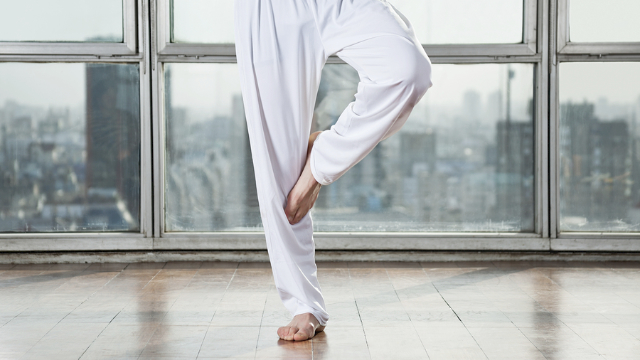News
Single-Leg Balance May Help To Predict One’s Mortality Risk

As we age, our bodies experience various physical and mental changes that usually tend to make everyday activities more difficult to complete. Decreased flexibility, some decline in posture and hearing, and some stiffening in the joints are a few of the many changes that occur throughout the aging process. Many individuals will also experience changes in their balance later in life, which typically begins in the mid–50s and can significantly increase the risk for falls and other health complications.
Falls are easily the greatest threat to the health of older adults, as one–third of adults over the age of 65 and one–half of adults over 85 will fall at least once each year. This leads to approximately 2.8 million ER visits, 800,000 hospitalizations, and 27,000 deaths each year, which makes falls the leading cause of non–fatal and fatal injuries in this population. In addition, about 20–30% of falls cause moderate to severe injuries that have a significant impact on one’s functional mobility and independence, which makes them a top priority in healthcare.
Balance and falls are intricately linked, as impaired balance is one of the leading risk factors for falling. Improving balance, therefore, is generally regarded as an essential step to falls in older adults, and various measures are recommended to accomplish this. To develop a clearer understanding of how important good balance is for overall health in older adults, a study was conducted determine if performance on a single balance test was associated with the risk for death and if it provided any prognostic information for patients.
Failing a basic balance test can have significant implications on life expectancy
For the study, researchers evaluated the balance, clinical status, and vital status of 1,702 individuals aged between 51–75 years. The balance test was called the 10–second one–legged stance (10–s OLS), which involves standing on one leg for 10 seconds (participants were allowed three attempts on each leg). With this data, researchers then determined if the ability to pass the 10–s OLS was associated with an increased risk of death.
Results showed that 80.6% of participants were able to pass the 10–s OLS, while the remaining 20.4% were unable to do so. Unsurprisingly, the ability to pass this test decreased with age, as 95% of participants aged 51–55 years passed, but the rate of failure doubled every five years, with those aged 71–75 years having a higher rate of failing than passing.
Over the 7 years that the study was conducted, 7.2% of participants died, which included 4.6% of participants who passed the 10–s OLS and 17.5% of participants who failed it. Further analysis indicated that the risk of dying was 4 times greater for those who failed the 10–s OLS compared to those who passed it, as those who failed it had an 84% higher chance of dying over the next 10 years than those who passed.
It's important to note that this was an observational study and therefore does not prove that poor balance directly increases a person’s risk for dying, and that the two factors are merely correlated. However, these findings are still valuable, as they show that the 10–s OLS can serve as an important barometer for one’s overall health and possibly their longevity as well. And if you’re unable to pass the 10–s OLS currently, our therapists can design a personalized treatment program that targets your balance and any other physical limitations that might be present.
Disclaimer:
The information in the articles, posts, and newsfeed is intended for informational and educational purposes only and in no way should be taken to be the provision or practice of physical therapy, medical, or professional healthcare advice or services. The information should not be considered complete or exhaustive and should not be used for diagnostic or treatment purposes without first consulting with your physical therapist, occupational therapist, physician or other healthcare provider. The owners of this website accept no responsibility for the misuse of information contained within this website.
